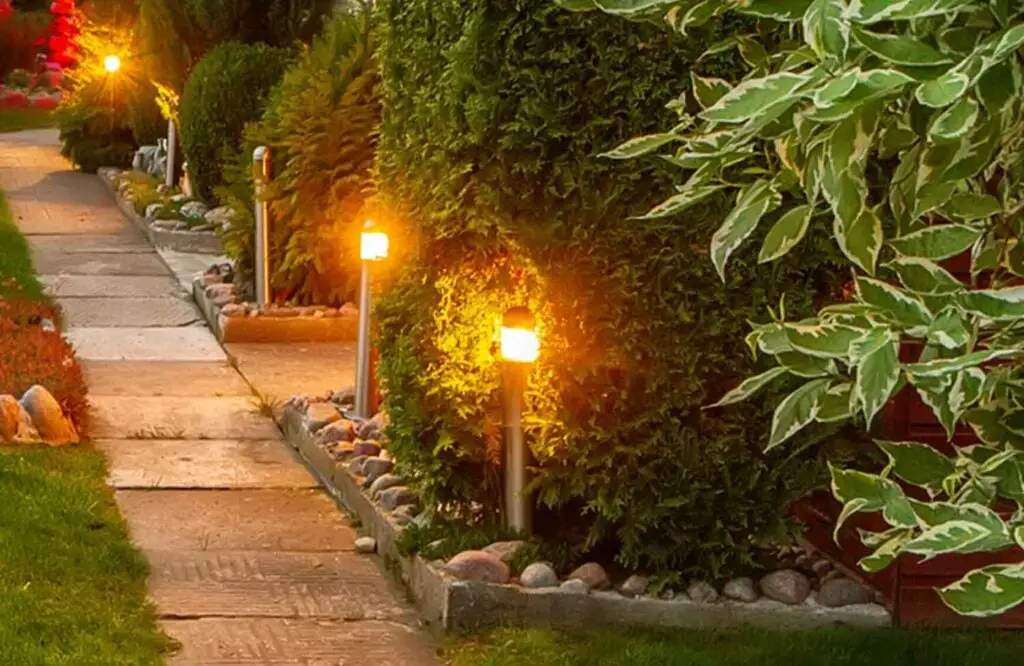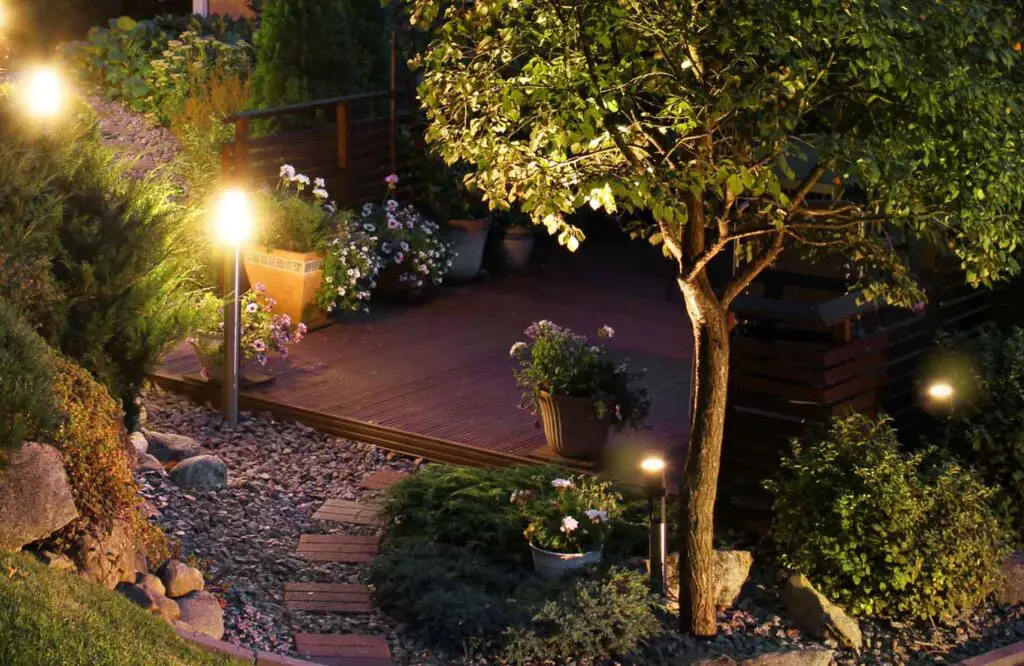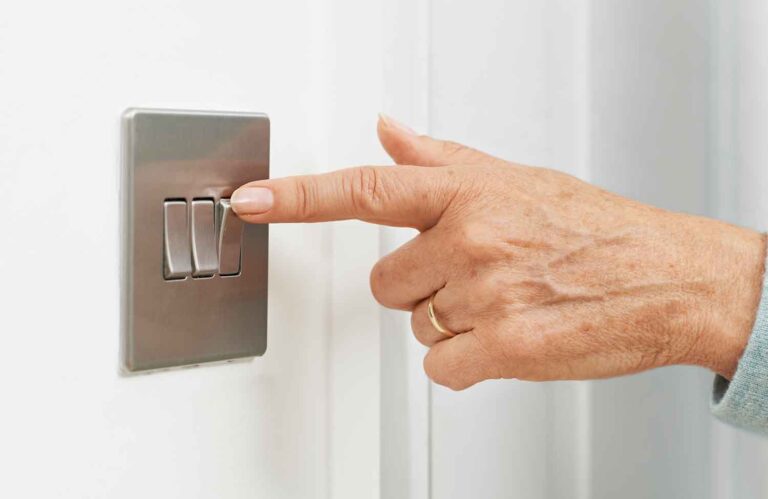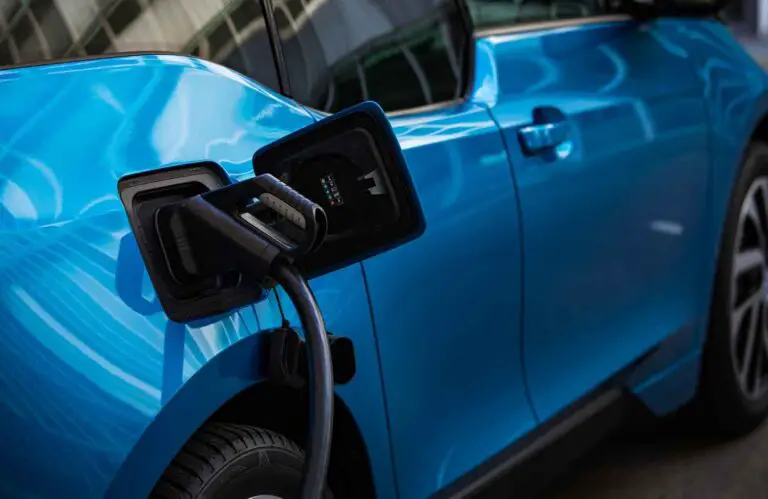Garden Lighting Installations: Top Tips & Safety
Garden lighting installations are a simple way to drastically improve the ambience of your outdoor spaces. However, as they’re exposed to the outdoor elements, there is an inherent risk in using any type of electrical appliance in the garden. You must therefore be extra-conscious with the installation and running of any outdoor lighting fixtures to ensure their electrical safety.
In summary, some key safety tips for garden lighting installations include using outdoor-rated outlets, fixtures, and bulbs, installing GFCI protection in the circuit, avoiding overloading the circuit with appliances, and turning off the lighting when it isn’t being used. Following these tips will leave you with a garden lighting installation that will beautify your property without putting it at risk of fires or electrical hazards.
Top Tips for Garden Lighting Installations
Before getting into the installation of a garden lighting fixture, look over these essential tips regarding their safety and efficiency.
Use Outdoor Weather-Resistant Outlets
For temporary outdoor fixtures like garden lighting, it’s best to use outdoor, and ideally weather-resistant, power outlets. Oppositely, you should avoid powering outdoor lighting by running a cord from an indoor outlet through a doorway or window.
It’s important to use dedicated outdoor outlets for garden lighting installations to ensure their electrical safety. Weather-resistant outlets are a relatively new invention, so older houses may not have these already. You may have to specially install these outlets if your home is an older build. It isn’t enough for the outlet to have a weather-proof cover; the receptacle itself must be able to withstand dampness, rainfall, and heat and cold. In other words, the outlet must be rated as weather-resistant in order to be for safe outdoor use.

Ensure Outdoor Outlets Have GFCI Protection
It’s also essential that the outdoor outlets have GFCI protection when installing fixtures like garden lighting. GFCI outlets are necessary anywhere that you may plug in an appliance while being grounded, especially in areas where the electricity comes close to water; this includes bathrooms, laundry rooms, kitchens, garages, attics, and outdoor outlets.
GFCI outlets, or Ground Fault Circuit Interrupters, are a key element of electrical safety for indoor and outdoor appliances alike. The GFCI outlet monitors the flow of current, cutting the power to the outlet immediately upon detecting a fault in the electrical system. This device prevents electric shocks to the users, or damage to the appliance, that can occur from a power surge or fault. It’s therefore essential that you have a GFCI device installed to ensure the electrical safety of your garden lighting.
Use Outdoor-Rated Lighting Fixtures
The lighting fixtures that you intend to use outside must be specifically rated for outdoor usage. It’s unsafe to use any type of electrical fixtures intended for indoor use in outdoor installations.
There are different degrees of outdoor-rated fixtures and the conditions that they can handle. For example, a light under your porch roof that doesn’t typically get wet must still be rated for ‘damp’ locations; it will still get damp, cold, and hot, and therefore must be suitable for outdoor use. A lighting fixture completely exposed to the elements will require a higher rating; it must be weatherproof, waterproof, and described as ‘suitable for wet locations’ instead.
Use Appropriate Bulbs for Outdoor Lighting
The bulbs in your garden lighting installations must also be safe for outdoor usage. You’ll also need to ensure that the bulbs you use are suitable for the maximum wattage of the lighting fixture.
1. Choose Bulbs Suitable for Outdoor Use
To determine whether a bulb is safe to use outdoors, you can look at its ‘IP rating’. An IP rating is a numerical figure given to all enclosed electrical appliances that represents their suitability for outdoor use; the rating is given based on how waterproof the object is, and how resistant it is to dust and particle ingress.
We can explain this further using an IP rating of IP65 as an example. The first digit reflects how resistant the object is against solid particles like dust and dirt. In this example, this is the number ‘6’. The second digit, i.e. the number ‘5’ in this example, shows the object’s resistance to liquids.
An appliance with a liquid rating of 4 will be fine in slightly damp conditions, like sprinklers or light rainfall. A higher rating of 5 or above would be necessary for objects that receive low-pressure jets of water from hoses. For complete safety in wet conditions, it’s best to choose an appliance with an IP rating of 6; this is the rating you should look for when choosing bulbs for a garden lighting installation.
2. Choose Bulbs with Correct Wattage
In addition to being safe for outdoor use, your bulbs must also have the correct wattage for the specific lighting fixture. Using bulbs that exceed the fixture’s maximum wattage can create an unsafe electrical situation.
Bulbs come with differing wattage levels, which can vary greatly between different types of bulbs. For instance, an LED bulb can have a significantly different wattage level to a halogen bulb. Choosing the correct bulb with the right wattage is crucial to ensure the safety of the fixture. If you use a bulb with too high a wattage, it can create an electrical short circuit in the system. It may also lead to other electrical faults like blown bulbs, overheated wiring, and damaged insulation. On top of this, using a bulb with too high a wattage is uneconomical as you’ll have to replace the burnt-out bulbs more often.
To avoid these issues, you must first look at the wattage rating for the fixture you’re installing. If the fixture is only rated for 60-watt bulbs, using a bulb with a higher wattage can be dangerous. Make sure to use bulbs that do not exceed the fixture’s maximum wattage rating for this reason. As an additional tip, opt for energy-efficient bulbs where possible; they generally use less energy and last longer than standard bulbs.

Turn Off Outdoor Lighting When Not in Use
Another simple but essential tip for the safe use of your garden lighting installation is to switch it off when it isn’t in use. Always remember to turn off the lights when going indoors or when leaving your home completely. As well as being a safety precaution, this will avoid energy wastage and keep your bills to a minimum.
This tip is relevant when using any electrical appliances in your home, but particularly for outdoor fixtures like garden lighting. Leaving your outdoor lighting on for too long could lead to overheating or other similar electrical faults; aside from this, you will needlessly incur higher running costs by leaving the lighting on when you aren’t using it. Also, if a fault occurs in your outdoor lighting, it can affect the electrical supply in the rest of your home.
Avoid Overloading Electrical Circuit
When your outdoor lighting is on, you must also be mindful of the other outdoor appliances that you’re running simultaneously. Using too many appliances at once can overload the circuit by drawing more power than it can cope with.
It’s likely that you’ll have multiple outdoor fixtures that you’ll run alongside your garden lighting fixtures. For instance, you could have outdoor kitchen appliances, grills, sound systems, or exterior fans; all of these appliances will draw from the same power circuit. If you overload the circuit with too many appliances, it can lead to tripped breakers and further underlying damage in the system. You must therefore ensure that you distribute the electrical load between two or more separate circuits to avoid these issues.
How to Safely Install Garden Lighting
Below, we explain a step-by-step method on how to safely install a garden lighting fixture.
1. Plan Ahead of Time
The first stage in installing your garden lighting should involve some initial planning for the job. You should first determine where you intend to install the lights and wiring. You’ll also need to locate a suitable electrical source in the area that can power the lighting; if you lack the suitable outdoor-rated outlets, you’ll need to install these in the right place. Alternatively, you can opt for battery or solar-powered lighting to avoid the necessity of outdoor outlets. Make sure that the fixture you choose will best suit the lighting needs of the space.
2. Switch Off Power at Mains
Before you do anything else, shut off the power to the relevant outlets from your home’s mains supply. This is crucial to avoid any electric shocks or accidents during the installation of your garden lighting.
3. Use a Socket Tester on Outlet
Next, you should test the electrical outlets using a socket tester. This is a device that indicates whether a power outlet has any faults posing a risk to the outlet’s safety. Providing all the relevant sockets are safe, continue to the next step. Otherwise, any electrical faults that the socket tester indicates will need addressing before you can continue with the installation.
4. Check Lighting and Power Cables for Damage
Check over your lighting fixture for signs of damage, particularly if it’s an older fixture you’ve kept in storage. Inspect the fixture’s bulbs and cables; check for loose connections, fraying cables, cracking, and/or burn marks. Any signs of damage such as these indicate that the fixture is unsafe for use.
5. Install GFCI Outlets
Make sure that the circuit you’re using for your garden lighting is protected by a GFCI outlet. If the outlet itself isn’t a GFCI outlet, it must at least be in the downstream of another. It’s best to consult an electrician if you’re unsure about whether your outdoor sockets are GFCI protected.
6. Run Low-Voltage Cables Underground
All of the cables for your outdoor garden lighting installations should run underground. The cables should be at least 450mm deep beneath patios and paths; under lawns and flowerbeds, they’ll need to be placed deeper at a minimum of 750mm beneath the ground. As an additional safety precaution, it’s best to opt for low-voltage cables; these will provide sufficient power to the lighting installation at the reduced risk of electrical faults.
7. Double Check Connections with Socket Tester
Once you’ve completed the installation, run a final safety check on all relevant outlets using a socket tester. Again, this is crucial to avoid any electrical accidents when you finally switch on your outdoor lights.



